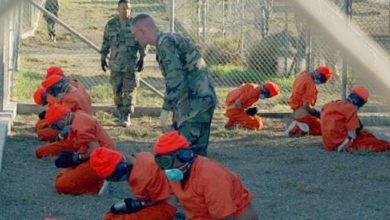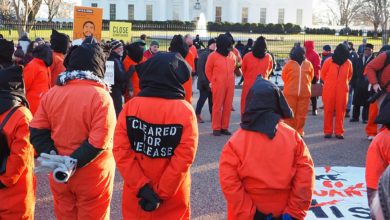In a Republican primary debate in 2016, Donald Trump vowed to “bring back a helluva lot worse than waterboarding” if he were elected, referring to an Obama-era executive order in 2009 and subsequent Congressional legislation in 2015 that banned the practice of waterboarding and other forms of torture by U.S. agents. His recent nomination of Gina Haspel for the position of Director of Central Intelligence seems to be a step toward realizing that vision.
Haspel has come under public scrutiny after it was made known that she had previously been the director of one of the CIA’s infamous “black sites”- secret sites located around the world where prisoners could be “interrogated” away from prying eyes and the laws of the United States. The
site Haspel ran became notorious as the site where War on Terror prisoner Abu Zubaydah, and others were held and tortured. He was subjected to, among other things, 83 separate waterboarding sessions in the space of slightly over three weeks in 2002.
According to CIA whistleblower John Kiriakou, who was a colleague of Haspel’s, she “was very quick and very willing to use force” and even “tortured for the sake of torture.” (Democracy Now) Kiriakou also explicitly denies that the purpose of these “enhanced interrogation” sessions was intelligence gathering, stating categorically that these torture sessions were “not about getting information.”
Why torture?
Information provided under extreme duress has long been known to be extremely unreliable. A number of studies in recent decades have made it clear that establishing a rapport with prisoners is far more likely to produce accurate information than so-called “enhanced interrogation techniques.” So why has torture persisted?
The purpose of these “interrogation sessions” is the torture itself. It is a favorite tool of oppressors for spreading fear and intimidation. U.S.
imperialism has employed torture with gruesome enthusiasm- not only in the age of the War on Terror, but throughout the country’s imperial history.
Torture in Vietnam
Torture of suspected National Liberation Front cadre and sympathizers by both CIA and regular army units during the Vietnam war was both extensive and brutal. People were detained at random and in huge numbers over the course of the war, and many of them did not survive their “interrogation.” In the case of the CIA, many of these sessions were conducted under the Phoenix Program, a massive coordinated effort consisting of targeted killings, propaganda blitzes and widespread torture. The program was intended to crush the communist-led national liberation movement through a decapitation of their leadership and a campaign of terror carried on against the people at large.
Just like today, the use of torture by U.S. imperialists in Vietnam was not an attempt to extract information but an attempt to terrify the population into submission. When some of the details of this campaign became known to the public as a result of investigations by the Church
Committee and other Congressional investigations, then-CIA Director William Colby maintained that these were isolated incidents, excesses committed by overzealous operatives at the individual level that did not reflect CIA policy. This public disavowal of the use of torture in the wake of revelations concerning U.S. torture operations would be repeated during the Bush administration.
The “water cure”
U.S. imperialists have employed torture against national liberation movements in their colonies for as long as they have been an imperial
power. From the very earliest days, waterboarding has been a hallmark of U.S. imperialism.
In 1903, Lieutenant Grover Flint of the U.S. Army testified to the use of what was then known as “the water cure” before the Senate Philippines
Committee. He himself had seen hundreds of instances in which Filipino resistance fighters, civilian leaders and even random people on the street
were subjected to it. Then, too, the answerable authorities acknowledged only individual instances of “water cure” that had happened in isolation from one another, and did not confirm or substantiate the allegations that these were part of a systematic policy of mass torture.
“Mild torture”
More than a century later, much of the same logic and many of the same arguments that were employed by the Roosevelt administration to excuse the use of the “water cure” would be used to support the use of waterboarding. Spokespeople maintained that the torture had no lasting effects and was by all accounts not torture at all. This same logic has been used to support the widespread use of solitary confinement in U.S. prisons, which is recognized as yet another form of torture by the United Nations.
The conventional rationale for the continued use of torture by the United States, that its use will prevent attacks on the U.S. and ensure national security, breaks down in the face of the fact that torture fails to yield useful information. It becomes obvious when we examine the decades of solitary confinement endured by revolutionaries like Albert Woodfox, that the purpose of these abuses is not gathering intelligence, but creating intimidation.
End torture- end imperialism!
The use of torture by the U.S. is not a simply a symptom of individual moral corruption but rather a tool of oppression used by the ruling class against working class and oppressed people. A a system which depends on torture for its survival cannot possibly be responsible for ending that practice. By embracing socialism, we can dismantle the system of imperialism that provides the material basis and motivation for continuing to torture, intimidate and oppress working people all over the world.





